This, our second trip of the season, was designed for our more active members and included some of the fascinating site on this historic and prehistoric landscape. Convening at Jepson’s Gate on Anglezarke Moor, the first leg of our walk took us into the very picturesque Lead Mines Clough, where our tour guides, Derek Cartwright and Garry Rhodes regaled us with stories of the mines and their history. Continue reading…
Martland Mill to Crooke Village
Great turnout for this the first of our two summer trips this year. At the end of the month we will be visiting the prehistoric sites on Anglezarke and Rivington moors but today we had a much more sedate tour of the historic delights along the Leeds and Liverpool canal. Jim Meehan our guide has meticulously done his research on the stretch between Martland Mill and Crooke Village and as a result the trip was not only entertaining but informative as well.
Our starting point was the old canal bridge where Jim gave a gruesome description of a couple of drownings. One was a young man, being drunk on New Years eve, fell into the canal as he left the pub. The other was the driver who fell off his cart when it hit the corner while travelling over the bridge. Continue reading…
Aspull Ring Ditch Return
This month saw us all back working on this fascinating prehistoric site, unique in Greater Manchester (and possibly the whole of Lancashire). In fact work really started in April with a coring exercise in areas between trenches, trying to see if we could identify gaps, without having to do more digging.
Story so far –
In November last year we finally got the result back from Oxford Labs from the charcoal we retrieved from the bottom Trench 1. To our surprise this came in at mid Bronze Age (1501 (95.4%) 1425calBC) – but at least it confirmed our site is prehistoric.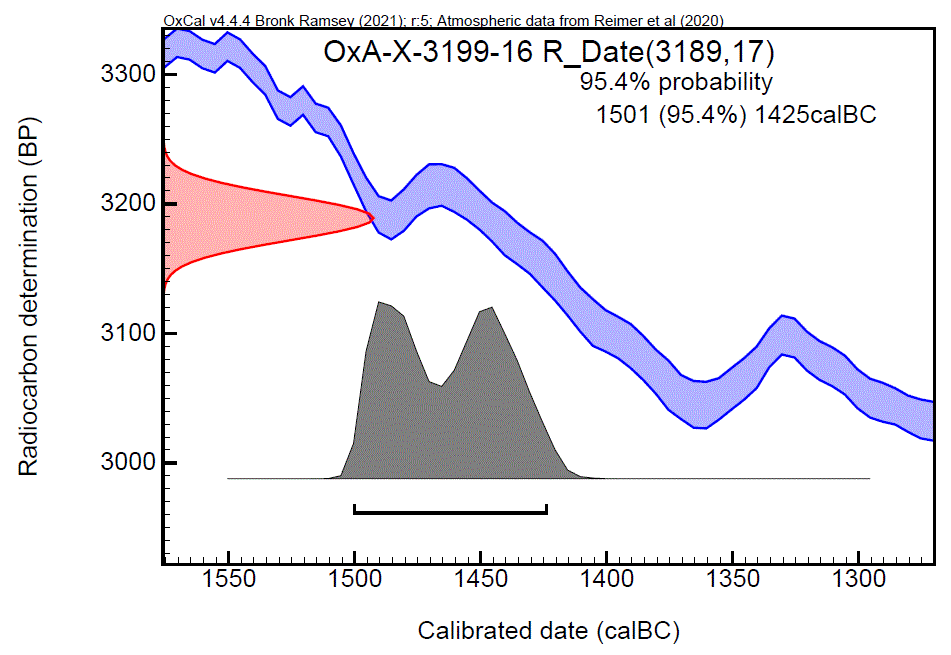 Up until then, with no other finds, we had been relying on typology, but this hadn’t been easy, as there aren’t many sites of similar size and form. Initially the central mound had suggested a Bronze Age barrow but, not being perfectly circular and having an entrance, made this unlikely. Our researches to reveal sites with similar configurations to ours known as causewayed ring ditches. A group of these in North Wales had one in particular, at Pentrehobin, with similar proportions to ours (44m diameter ditch, 4m wide by 2m deep). Another group on the Isle of Thanet in Kent was excavated in the 1970s and 80s. One, called Lord of the Manor III, even had a central mound like ours. Perhaps the closest, proportionally, to ours though is a site not far from Stonehenge called Coneybury henge.
Up until then, with no other finds, we had been relying on typology, but this hadn’t been easy, as there aren’t many sites of similar size and form. Initially the central mound had suggested a Bronze Age barrow but, not being perfectly circular and having an entrance, made this unlikely. Our researches to reveal sites with similar configurations to ours known as causewayed ring ditches. A group of these in North Wales had one in particular, at Pentrehobin, with similar proportions to ours (44m diameter ditch, 4m wide by 2m deep). Another group on the Isle of Thanet in Kent was excavated in the 1970s and 80s. One, called Lord of the Manor III, even had a central mound like ours. Perhaps the closest, proportionally, to ours though is a site not far from Stonehenge called Coneybury henge. 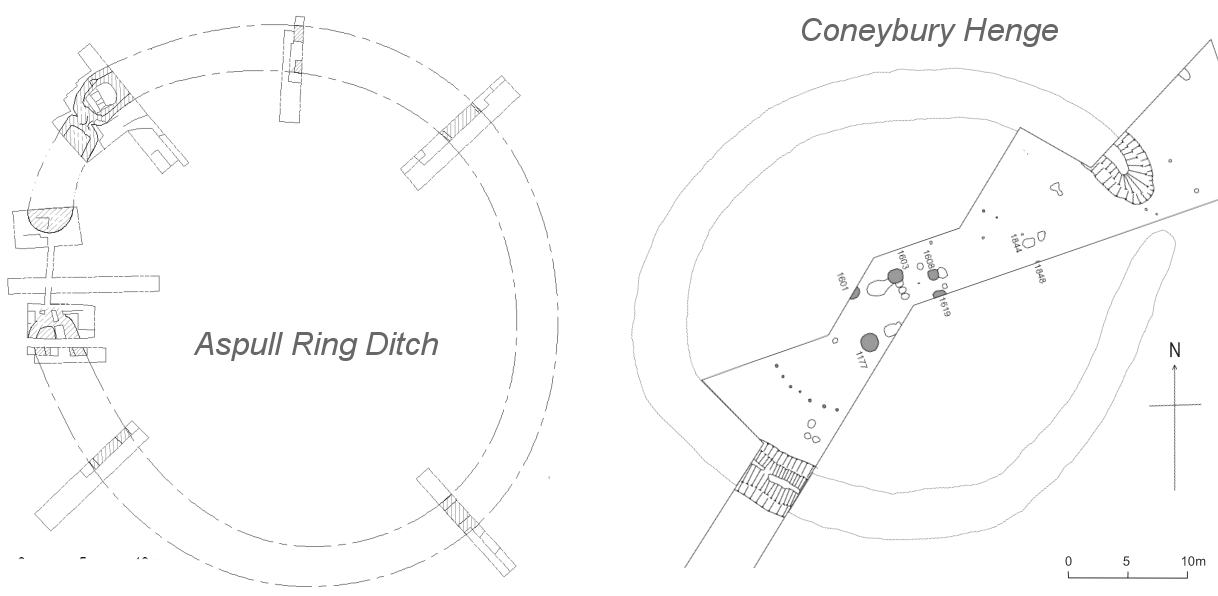 As with ours, it has no outer bank (which is assumed to have been ploughed out) but unlike ours it didn’t have a central mound. All these sites are generally dated to the late Neolithic / early Bronze Age and some contain burials, but rarely have central mounds. When these do occur, it suggests maybe a transition period when the newcomers reused the old monuments, before building their own traditional ring ditches and barrow forms. Whatever the date of its construction, there’s no denying our ring ditch is a very significant prehistoric monument, perhaps of national importance but certainly something quite unique for the region.
As with ours, it has no outer bank (which is assumed to have been ploughed out) but unlike ours it didn’t have a central mound. All these sites are generally dated to the late Neolithic / early Bronze Age and some contain burials, but rarely have central mounds. When these do occur, it suggests maybe a transition period when the newcomers reused the old monuments, before building their own traditional ring ditches and barrow forms. Whatever the date of its construction, there’s no denying our ring ditch is a very significant prehistoric monument, perhaps of national importance but certainly something quite unique for the region.
Towards the end of last year two more samples were sent off for testing. This time they had been retrieved from the burnt wood feature at the bottom of Trench 5. One sample went to the Chrono14 labs at Queens University Belfast, the second to CARD which a free service specifically set up for amateur groups. We have now had the results back from the former – this time the calibrated date given is between 1600 and 1700 BC. Although 100 to 200 years earlier, it’s still in the mid Bronze Age range. CARD have identified the wood species as oak which they say is less accurate than say willow which has a much shorter life span. We’re not expecting the result from CARD till later in the year.
As usual you can follow our the progress with our daily Site Diary (our current blog is here, previous year’s work here, and general project information here).
All Saints Church Tower Project
In 2011 Peter Layland presented us with a paper on the research he had carried out on the history and origins of the Wigan’s All Saints Parish Church (an updated version can be viewed here). Since he retired in 2017 Peter has been increasingly fascinated by the Church’s tower. This is the only part, apart from the Walmesley Chapel and rood turrets, that survived rebuild of the Church in the 1840s and probably dates to the 13th century. Peter is also intrigued by the fact that it’s location with regard to the Church is not where you would normally expect being positioned on the northeast side (towers are normally on the west end or in the centre if there is a transept).
Peter asked if we could help with a new study focusing on the tower. Before Christmas we offered our expertise in surveying to see if we could unravel some of the mysteries of this strange and unusual structure. Continue reading… .
Worsley Delph Trip
Great turnout for this trip with over twenty meeting on The Green at Worsley for a guided tour by Manchester’s most renown industrial archaeologist, Dr Mike Nevell. You can read about this very entertaining trip here.
Aspull Ring Feature
We first became aware of this feature when Steven Twigg (formally of STAG – South Trafford Archaeology Group) contacted us with an aerial image in 2019. The crop mark shows up quite clearly as a dark green circle and seems to represent a circular ditch around 40m in diameter. Viewing various other aerial images spanning a number of years confirmed the mark to be more than just a temporary agricultural feature.
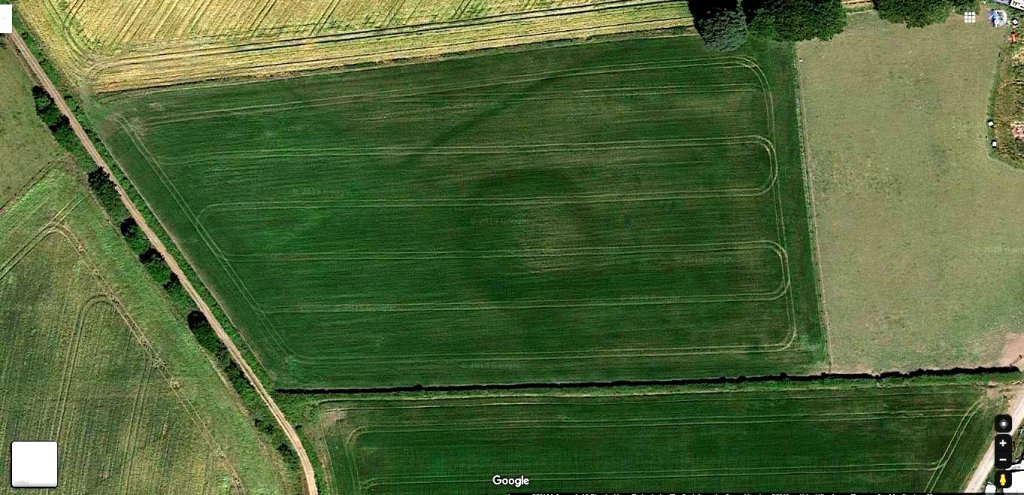 The size of the circle would suggest something prehistoric and probably older than Iron Age as it is certainly bigger than a roundhouse. The LiDAR image however revealed the site to have a shallow mound in the centre. This would suggest a Bronze Age barrow (similar sized ones can be seen at Normanton Down in Wiltshire). Its central mound and continuous surrounding ditch would suggest a Type 2 Bowl Barrow as classified by Historic England. (ref)
The size of the circle would suggest something prehistoric and probably older than Iron Age as it is certainly bigger than a roundhouse. The LiDAR image however revealed the site to have a shallow mound in the centre. This would suggest a Bronze Age barrow (similar sized ones can be seen at Normanton Down in Wiltshire). Its central mound and continuous surrounding ditch would suggest a Type 2 Bowl Barrow as classified by Historic England. (ref)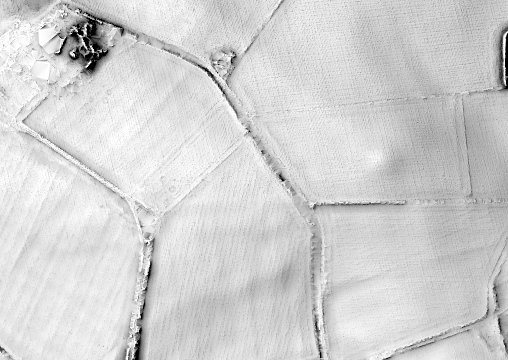
In the Autumn of 2021, we carried out a resistivity survey of the site with very encouraging results as reported in our October Newsletter (No.246). This year we’ve been able to return to carry out further investigations and start a season of excavations. You can find more details of our Aspull Ring Ditch project here
– and follow our the progress with our Site Diary blog here
Aspull DMV Survey
In February 2020 our attention was drawn to crop marks appearing on earlier versions Google Earth in a field in Aspull. They only appear in 2012 and 2013 but as they span over 12 months it suggests they are likely to represented something more than just agricultural activity. What is interesting about the rectilinear shapes of the crop marks is that they have all the hallmarks of a DMV (i.e. a Deserted Medieval Village). A circular feature on the left side of the field could be even be prehistoric. 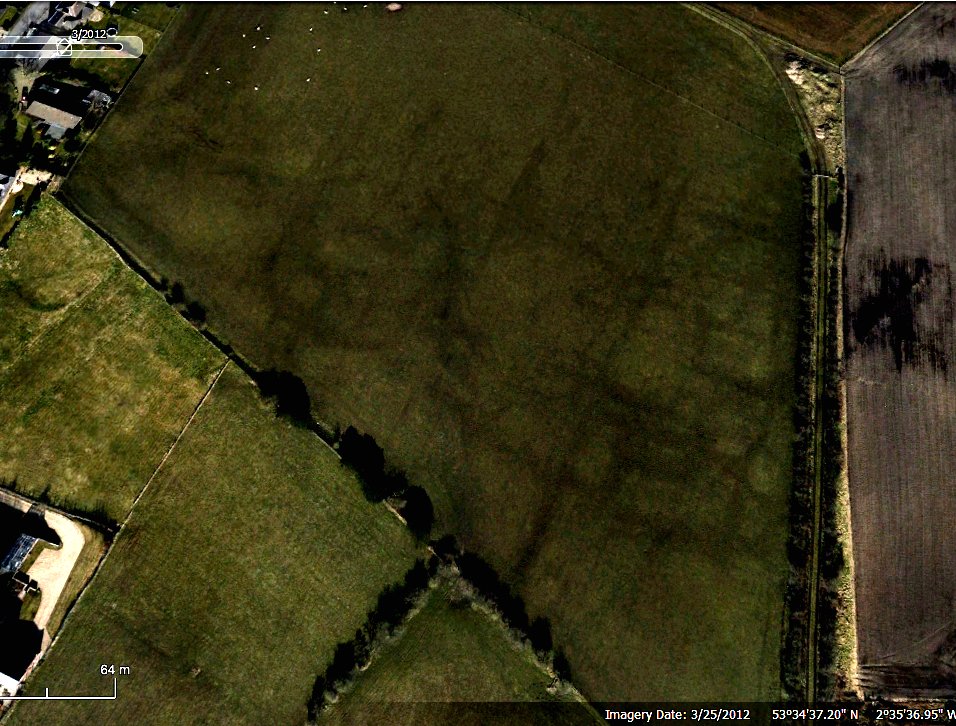 DMV sites can be found all over the country although few occur in the northwest (the nearest examples is perhaps at Tatton Park in Cheshire). Their dates can range across the whole of the early Medieval period although they are usually the result of either the plague or clearance by the lord of the manor to create a park (as was the case at Tatton).
DMV sites can be found all over the country although few occur in the northwest (the nearest examples is perhaps at Tatton Park in Cheshire). Their dates can range across the whole of the early Medieval period although they are usually the result of either the plague or clearance by the lord of the manor to create a park (as was the case at Tatton).
Corvid has effected or field operations but lockdown restrictions are beginning to ease so, being eager to get back into the field, we started our survey of the site earlier this month. You can find out how we got on here.
Douglas River Source Trip
As part of the Douglas River Project, last month Eric and I met at Rivington Barn for a trip onto Rivington moor. This was to see if we could trace the route of the River on the moor and perhaps find its source (clues where to look are in the name i.e. Douglas Springs). Having climbed up through the terraces of Lord Leverhulme’s Japanese garden onto Belmont Road, we soon had our first encounter with the River – little more than a stream at this point, it passes through a culvert under the road at a place called Brown Hill. You can find details of the rest of the trip here.
Roman Road Research Online
Lockdown has given me the opportunity to catch up with all the research we have carried out over years on the Roman roads in our area. Our investigations go back to the earliest days of the Society – we made our first foray into the field as early as 1985. However our researches began even earlier when, in 1983, we produced our first report on the road leading north out of Wigan. You can now see all this work here .Also
Wigan to Walton-le-Dale
Wigan to Warrington
Wigan to Manchester
Wigan to Burscough
Wigan to Ribchester
St Wilfrid’s Ledger Stones Survey
Following on from our Graffiti Survey last year in the Parish Church at Standish, it has been our intention to record the grave slabs (ledger stones) inside the church. These were exposed when the carpets were removed last year. These ledger stones have not seen the light of day in a good many years and we thought it would be a shame for them disappear again without being properly recorded. You can follow our progress here.
